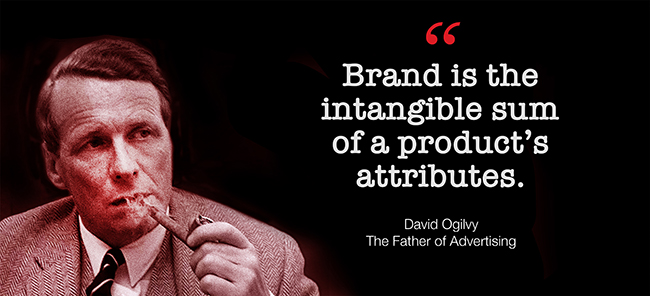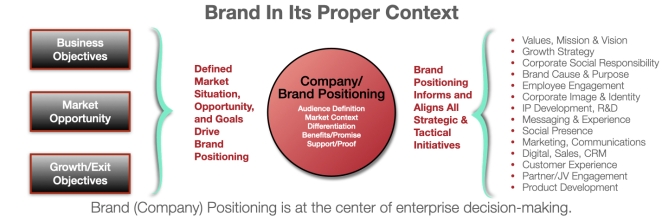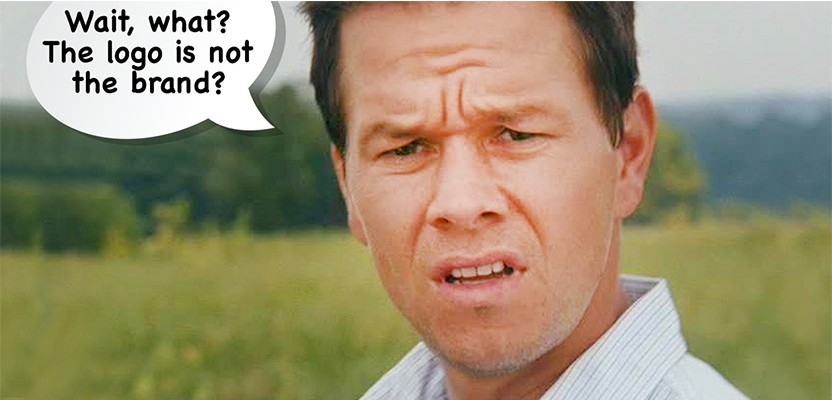When we launched a firm specializing in helping companies measure, build, and leverage brand and its equity to improve performance and increase returns, we knew naming the firm would be pretty important. After all, our name is our first impression. It matters. Given our focus, having “brand” in the name seemed logical. Expected, even. Everything in business is directly related to and impacted by brand. From productive and satisfied employees to crafting an ownable, scalable positioning, to building engaging customer experiences and loyalty, to corporate social responsibility, and a host of other things — it is all in the brand.
So “brand” had to be in the name. And BRANDThink sounded cool and provocative. It suggested, “Be a smart brand.” Everyone would get it. It would be obvious. I mean, everyone understands what a brand is. Right? Well, no. We figured wrong.
The truth is, brand is the most misperceived and erroneously used word in business. It means a lot of different things to different people. Even some well-educated MBAs, who do very well for themselves and for whom we have great respect, sometimes exhibit a disturbingly narrow understanding of brand and its power to impact business performance and value. Their definition of brand is off. Way off. Which, in turn, makes their assumptions about BRANDThink off, sometimes way off. We’ve heard, "Branding? Thanks, but we don’t need a new logo”. Or “We just redid our website and don’t need new collateral.” So right away, BRANDThink has an uphill climb. Did we make a mistake? Time for a name change? The jury’s still out.
This misconception of brand, and the narrow scope in which it is considered by many, is deeply ingrained. And no one seems to be teaching brand as we define it. There is no single overview course on how a brand functions or on brand equity in Harvard’s MBA program. Yet there are brand implications to consider in just about every class taught. The word “brand” is mostly understood purely from a design or image context, not how brand equity and intangibles contribute to build value, or grow share, or increasing returns. For too many, brand is a logo, a tagline, or a color and a font. And for the numbers-focused investment community, brand intangibles are a little too vague, a bit of fuzzy math. As a result, focusing on building brand equity has been generally ignored, regardless of the abundance of data in support of why it shouldn’t be ignored. It quickly became apparent: we are not just offering a service but also changing a perspective, maybe even shifting a paradigm.
The Industry Has Been No Help
It’s a definition and context problem. The American Marketing Association defines a brand as “A name, term, design, symbol, or any other feature that identifies one seller's good or service as distinct from those of other sellers. The legal term for brand is trademark.” A remarkably inadequate definition. And contextually quite wrong. But it’s been this way for some time, like from back when they started branding cattle.
To the detriment of great strategic thinking, brand strategy and tactical execution are often sold together, helping to perpetuate a narrow definition of brand and its strategic context. It almost marginalizes and commoditizes brand strategy only as a tool to get execution fees. The idea of brand is best understood in an enterprise-wide, market-driven, strategy-first context. Execution, like design and identity, is only one small aspect of extending a brand’s positioning strategy. All experiences combined is “brand”.
On occasion, the misconception of brand can feel pervasive in the private equity space. After all, these are number-driven folks, and many aspects of brand are intangible and don’t sit neatly on a balance sheet. But in the last few years, the PE world has been coming around. Brand is getting the proper attention from firms with high-performance and high-return value creation goals. Investment firms are partnering with brand strategy talent and seeing the many advantages of a strongly aligned and leveraged brand. Founders are looking for investment firms with strong brand teams. Brand talent is becoming a competitive differentiator for private equity and venture firms. It is happening.
Clarifying The Misconception – The Proper Context and Construct of Brand
Think of “brand” as generally synonymous with “company”. The company and all its experiences, internally and externally, is the brand. This is not a new idea. Mr. Ogilvy said it with simple eloquence back in the 60’s:

In the 2020’s, smartphone-connected world, experiences that shape the brand goes well beyond just the product or service to include the sum of all experiences with the company, at every point of touch. The underlying brand strategy defines each and every brand experience and brand engagement. Marty Neumeier, Author of On Brand, channels his inner Ogilvy:

The consensus is clear. A brand is not a logo or a color, it’s not your corporate identity, nor is it just your product or service, or your website. A brand is a synergistic integration of rational and emotional attributes, all of which build the relationship. And it is relationships that build value. A brand is both intangible and tangible and both rational and emotional. Defining and extending a brand is both art and science, technical and spiritual. It is as much about feelings as features. And feelings are complicated. This is the context in which a brand must be defined.
Articulating a clear brand (company) positioning that fully leverages the potential of brand starts with clarity of the business and its stakeholders first. Positioning first depends on three things:
- Grounding strategy in stakeholder and/or business objectives.
- Aligning those objectives with market dynamics and opportunity.
- Aligning 1 & 2 with growth objectives and/or exit strategy.
The proper context of a brand and its strategic construct looks like this:

Strategies and tactics for extending a brand and building the business are grounded in a clearly defined positioning that was informed by and aligned with business goals and market opportunity. Executing brand strategy within this context ensures all efforts are aligned and optimized across the enterprise and in the market. Everything just hums. The proverbial well-oiled machine, everyone marching to the same drummer, all with the same goals.
Amplify and Accelerate
It’s all about getting the positioning right. A single-minded positioning is clearly and easily understood and articulated among all constituents – leadership, management’s employees, customers, and the market. This alignment builds tremendous power. An aligned brand amplifies messaging and presence, accelerates market performance, and builds equity value and goodwill. If a company focuses on building and maintaining all aspects of a strong brand, it will undoubtedly outperform its competition and deliver outsized returns in the market and for shareholders. Strong brands have unquestioned financial value, right Apple? True for companies of any size, B2B and B2C.
As margins for investment firms get stretched and competition for good acquisitions increases, it’s become a best practice for private equity and venture capital firms to leverage brand equity optimization along with financial engineering and operational improvements to generate maximum value creation and returns. Brand is part of the playbook. Working all three best practices in concert ultimately drives up transaction multiples. Assessing brand strength has also become a requisite layer of evaluation in pre-diligence for acquisitions and for assessing brand compatibility for bolt-ons or mergers. Brand has its seat at the table. And we’re happy to be here.
So, back to the naming thing. Should we change it? Are we adding to the confusion? What do you think? We’re still losing sleep over it, but for now, we’re sticking with it. Regardless of whether brand is in the name or not, the challenge of clarifying misconceptions remains the same. So for now, we are BRANDThink. And we’ll probably stay that way.
***




